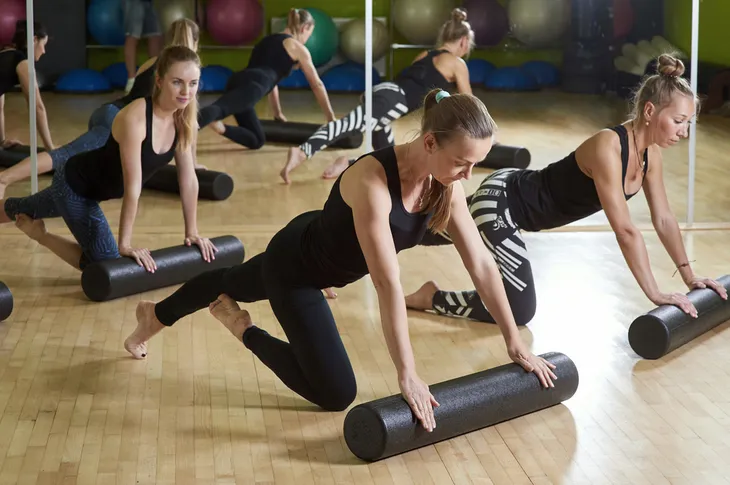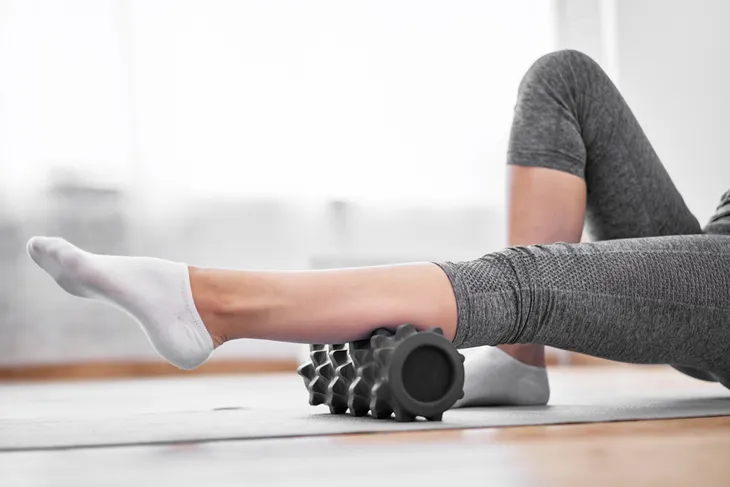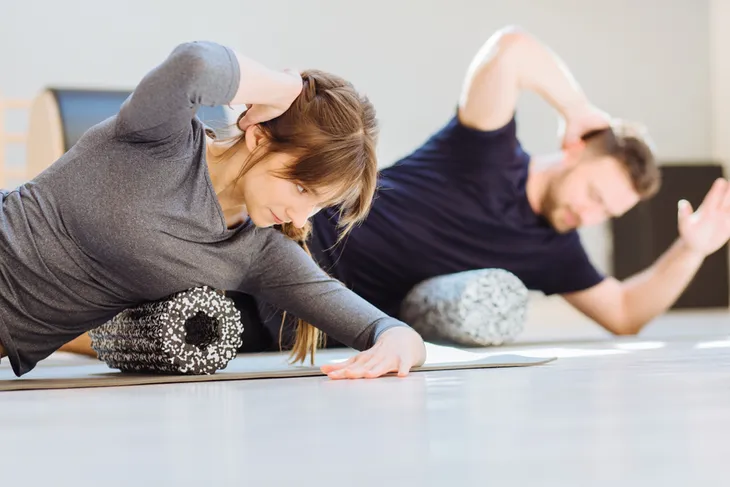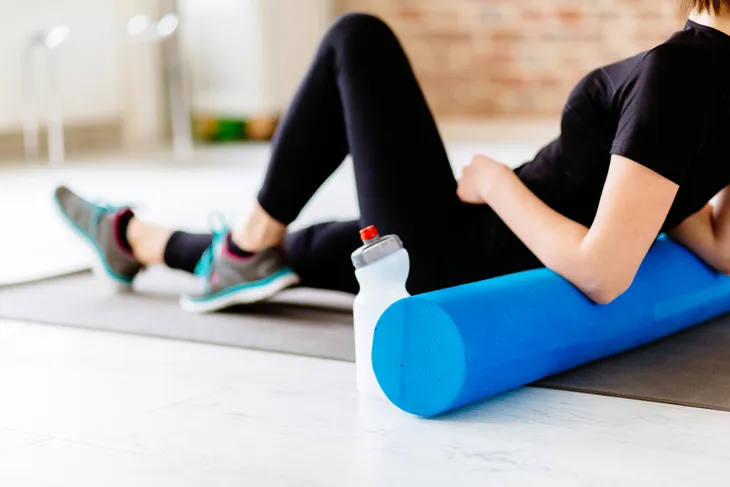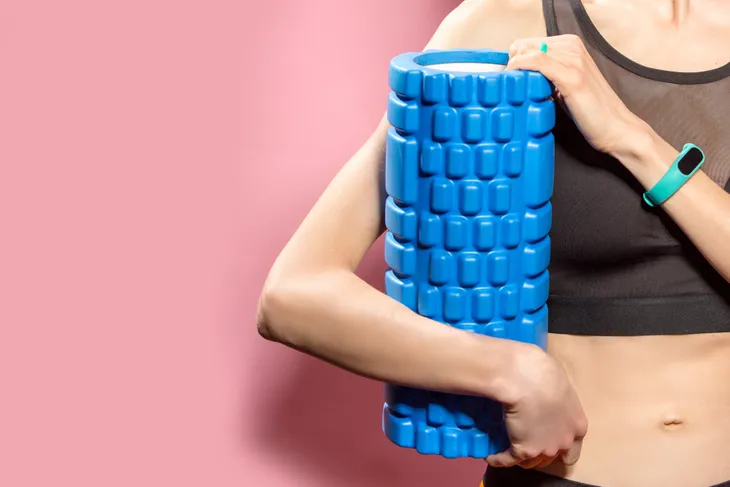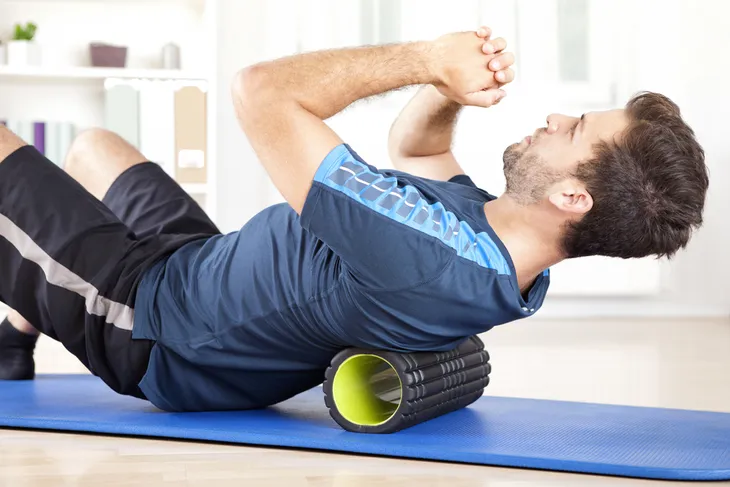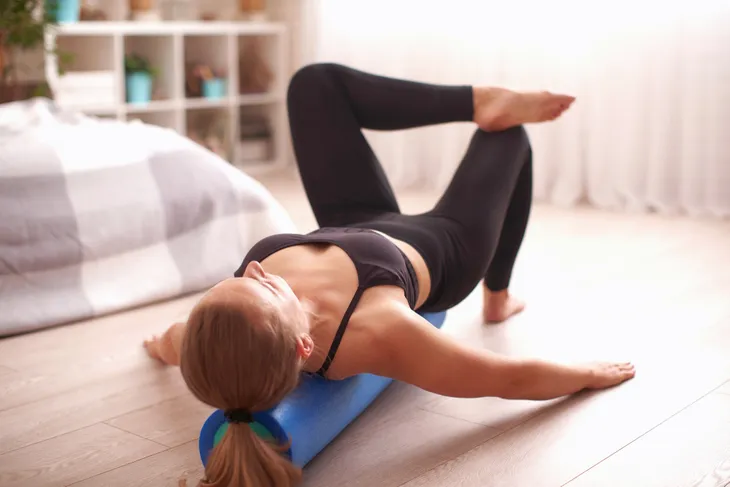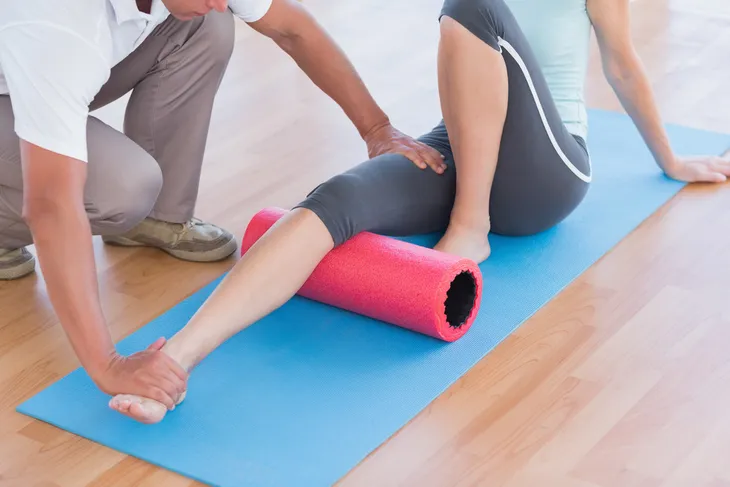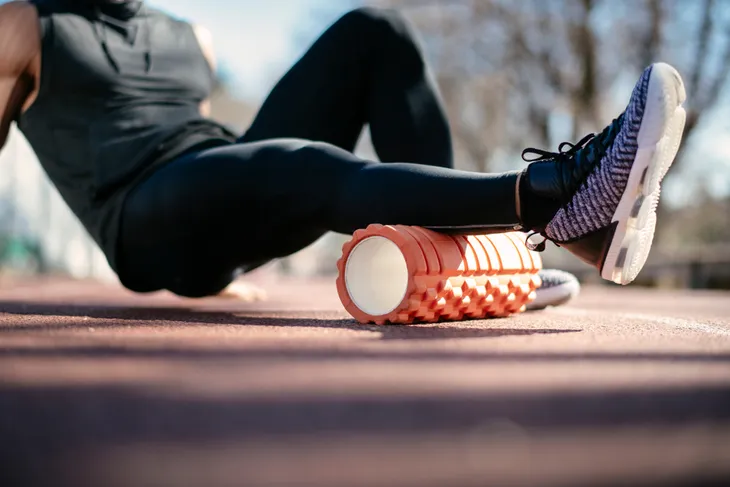If you exercise regularly and haven’t tried a foam roller yet, you’re sorely missing out. Anyone wanting a good muscle stretch and release could really benefit from using one – when used properly, they can help aching muscles heal more quickly, relieve muscle tightness and hard to reach trigger points, and provide a sort of self deep-tissue massage. It can be used pretty much all over the body, depending on where you need it and what type of exercise you do, and the affordability has fitness gurus everywhere taking advantage.
While foam rollers can make a serious, positive difference to your body, there are specific techniques to using one. Try out these 10 stretch and release foam roller tips to help you reap the benefits and avoid hurting yourself…
Know the Right Level of Pain
It’s best to be honest up front—using a foam roller isn’t going to feel good in the way a soft-tissue massage or soaking in a bathtub might. It’s definitely a case that fits the saying “no pain, no gain”, though the pain shouldn’t be severe and should be more like discomfort. That said, the results will be more than worth it and give you greater relief than many other forms of muscle and trigger point release.
The reason foam rollers are so effective is because they dig deep where you need it, so you’ll have to withstand a bit of discomfort in order to get the release your muscles need. Technically, the discomfort or light pain should lessen if you regularly target problem areas and spend the time needed to work through your muscle issues. Eventually pain significantly decreases as your muscles and trigger points release from using the foam roller. So when using one, put enough pressure to cause some discomfort but pay attention and don’t cause sharp, searing pain.
Use the Right Level of Pressure
Knowing the right level of pain and discomfort to endure when using a foam roller is related to using the right level of pressure. You don’t want to be digging in as hard as you can, since it’s likely to cause a lot of pain. When done with the right pressure, you’ll feel a release. Depending on the severity of the muscle issues, the results you feel will vary the first few times. It might not release the knotted muscles or trigger points completely or be instantaneous after one try, but most of the time you should feel something.
If you’re not getting any release, evaluate your technique or even seek the help of a professional. Consider the amount of pressure you’re using, as well as the other tips and tricks in this article. Deep muscle problems aren’t easy to work out but in many cases they can be with a foam roller. Adjust the pressure and evaluate how your muscles feel after. Foam rollers are self-release tools, so you’ll learn what works best. The first step is figuring out the pressure you need.
Relax and Roll Slowly
Your first reaction might be to work through a foam rolling session quickly to get the discomfort over with as fast as possible or because you’re in a rush, but you won’t benefit from it if you do so. What you do to your body after a workout, including using a foam roller, affects how your muscles feel and heal. The best tactic is to pay attention to your body as you use the roller, moving slowly over the affected muscles. The more you use it, the more in tune you’ll be with what your muscles need.
It’s important to remember to go slowly but also to breathe—when done right, your whole body will benefit from the release. When your muscles aren’t in the best shape or are strained, it can cause stress everywhere. And if you’re like most people out there, you should know that reducing something like job stress can affect the rest of your body. Same goes for muscle release from foam rollers. So breathe through sore spots and try to relax. The same focus should be given to this post-workout technique as the workout itself.
Heal Your Tissue
One of the best things about foam rollers is their ability to heal your muscle tissue. Working out, injuries, and even a seemingly normal and healthy lifestyle can all cause harm and stress on your body, especially your muscles. Just like illnesses and other emotional and physical stresses, healthy muscles that heal properly can boost how you feel in general. A foam roller has the ability to target muscles deeply and encourages blood flow to the area, increasing your body’s ability to heal damaged tissue from a workout or injury.
What our bodies naturally do to heal themselves every day in many different ways is pretty fascinating, and being as healthy as possible can greatly help with these processes. Think about your immune system or how your liver removes and flushes out toxins. Encouraging the healing process and making your muscles more receptive to healing can help you heal even quicker. Foam rollers have the ability to do so, and just about anyone could benefit from the use of one.
Don’t Ignore Your Back
You might have a lot of muscle tightness or very little but there’s a good chance you have back pain if you work, whether it’s a physical job or you sit at a desk all day. What you do for 40+ hours each week can hurt and strain your muscles. It might not be constant or something you’re really aware of, yet ignoring muscle tension, knots, and trigger points in your back can cause problems in many other area of your body. You might be surprised how uncomfortable it is when you use a roller on different areas—a sign those muscles need some attention.
A lot of people suffer from lower back pain, something that a foam roller could greatly reduce or eliminate completely when done regularly. But while your first thought might be to roll your lower back, you should actually target your hips. Tight hips add stress to your lower back, especially when bending over during certain workout moves, picking up children or groceries, or moving household items. Focus on releasing the tension in your hips for better back health.
Stop and Prevent Pain
Another great benefit of foam rollers is that they can not only stop pain that comes on after a workout or when your muscles get in a knot, but they might also prevent or reduce that pain from happening. The popularity of these rollers has more recently shone light on the potential benefits of using a roller before a workout. In fact, there are now several studies and other research that suggests people who use a foam roller beforehand could experience significantly less pain after the workout.
It might be worth giving a try—spend a few minutes slowly rolling on problem areas before and after a workout and assess how you feel. If there’s less pain, consider using it both pre- and post-workout. Of course, everyone is different and your body will adjust and benefit from the roller differently. Just remember to keep at it because using it only a few times won’t prevent you from future pain when not used regularly. You need consistency to feel results.
Rehabilitate From Injury
Foam rollers have been used for years by trainers, physiotherapists, and other types of health professionals who help people with rehabilitation after an injury, and they’re often a key component of the rehabilitation plan. Whether you were in a car accident, suffer from chronic muscle tension and trigger points, or were injured exercising or playing sports, foam rollers have become known as an extremely effective way to help your body heal and prevent further pain and injury.
If you’re currently working with a professional or have to in the future and they include the use of a foam roller, they’ll likely describe the tool as a way to provide self-myofascial release. The pain associated with muscle tension and trigger points can be quite severe and requires release to heal. With a foam rollers ability to target this pain directly, it works through the stress and encourages healing. This is why so many professionals use it to help patients who require muscle therapy.
Examine Your Whole Body
If you’re new to using a foam roller and choose not to go to a professional for help, a great way to start out is by slowly examining your own body. After all, this is something you’ll be relying on yourself to provide, so getting to know your body and identifying problem areas is key to benefiting the most from it. To examine your body using the roller, adjust the pressure and slowly roll over your muscles from head to toe to give you a clear idea of where you’re at.
Even if most of your exercise regime focuses on something cardiovascular, don’t assume only the obvious muscles need help. While there are many people who love treadmills and stair climbers, it’s easy to ignore muscles that aren’t burning afterwards. Your legs are a good place to start, but you could also benefit from using a foam roller in other places, so examine yourself. And a little workout tip? Although you might prefer strictly cardiovascular exercises to other types, you can improve the effectiveness of those workouts by focusing on other muscle groups, such as your core.
Target Where Needed
There are many suggestions on how to use a foam roller for specific types of exercise, like running. Calve muscles and hamstrings frequently cramp up, and using a foam roller on those areas and around your knees makes sense. However, what a lot of people don’t realize is that they have trigger points that affect other areas, sometimes far away from the source. Many don’t understand the importance and benefit of targeting these areas—it might not be obvious that a trigger point is doing something harmful when you don’t realize it exists. But eventually it could make itself known in a much more painful way.
Health professionals often suggest and include foam rollers in their plans for muscle therapy to quickly and effectively target problem areas and injuries, working them out before they cause additional pain or problems. Approach your use of a foam roller in the same way. Once you’ve examined your body and learned where to target, make sure you continue to work on those areas. You should also re-examine yourself from time to time, and of course target areas that become tense as they occur.
It’s More Than a Stretch
Over the years, there’s been some controversy about whether people should stretch before or after exercise (or both), but regardless of the varying theories a lot of people benefit from regular stretching. Stretching has been shown to help prevent muscle strains, improve posture and blood flow, lengthen muscles and improve flexibility. But stretching on its own often isn’t enough to provide the healing and release your body needs and could really benefit from. That’s where foam rollers come in.
Foam rollers provide a good stretch and experts believe they can be much more effective than stretching without one. Why? It’s targeted and reaches deep to release tension and knots, something not easily achieved without this prop or another similar form of deep tissue therapy. People enjoy deep-tissue massages because even though they may be a bit uncomfortable, the release is worth it. Foam rollers allow you to achieve this relief on your own, where simple stretching won’t reach deep enough to really unlock knots, promote the best healing, and remove tension.
